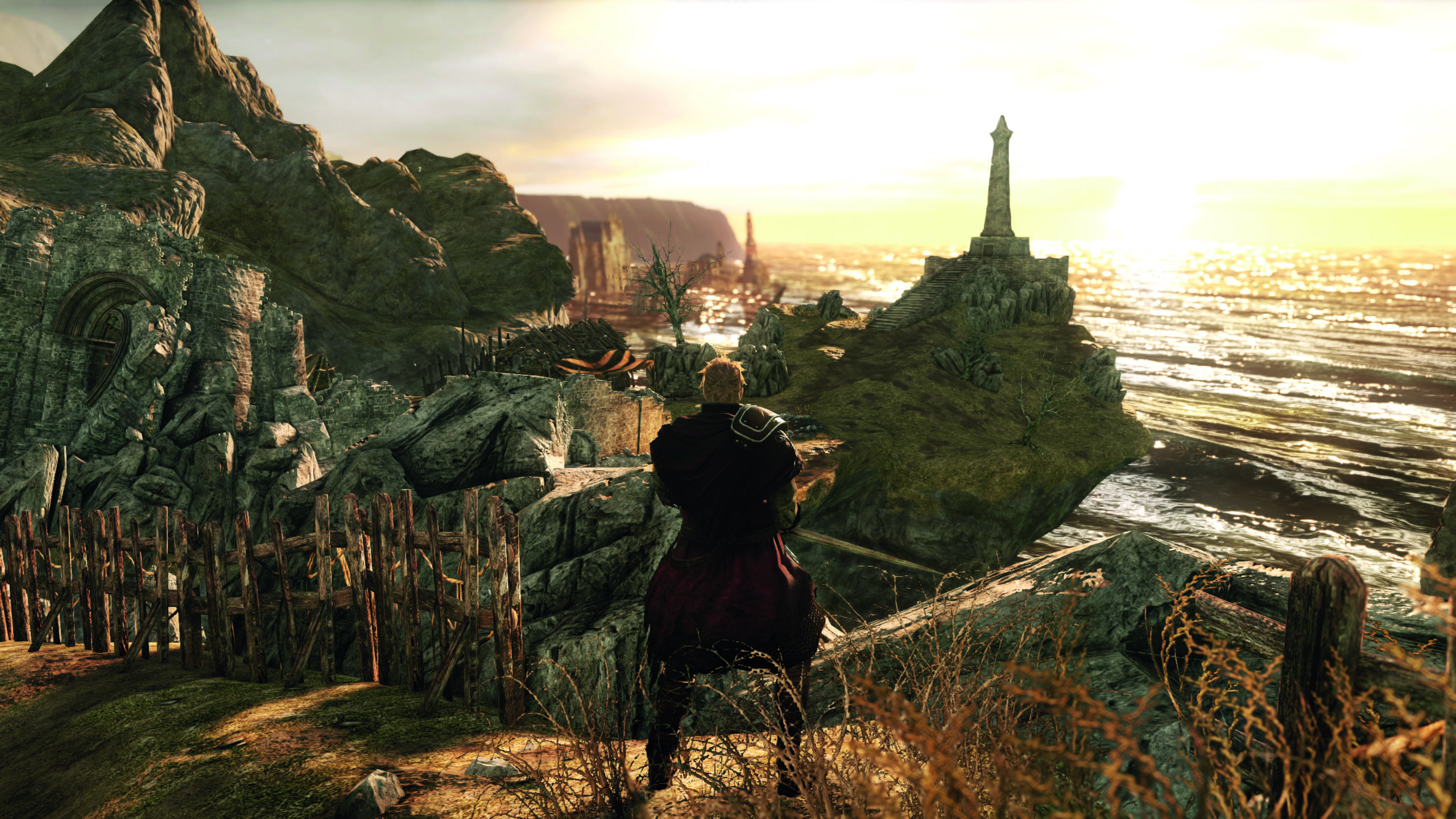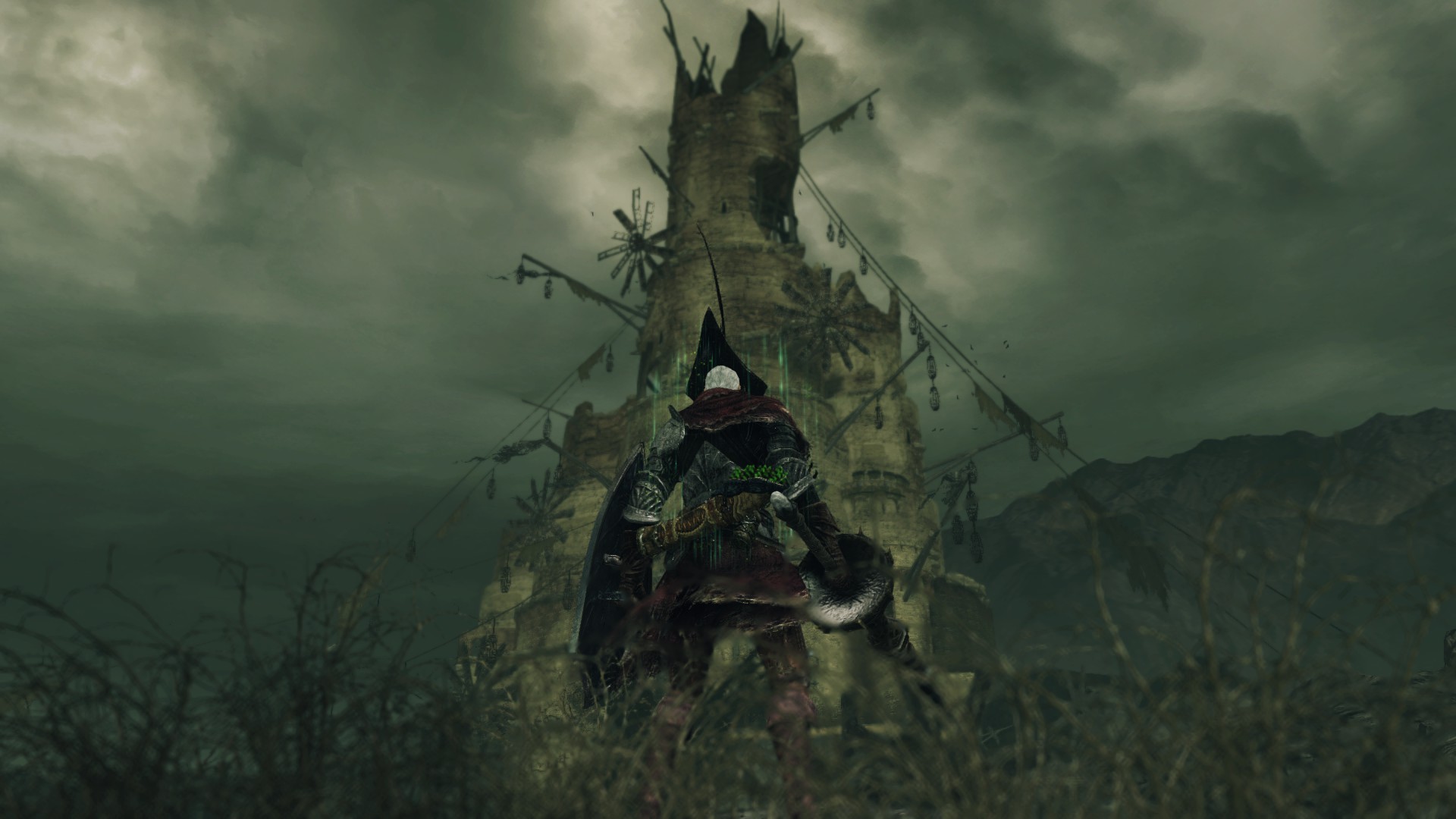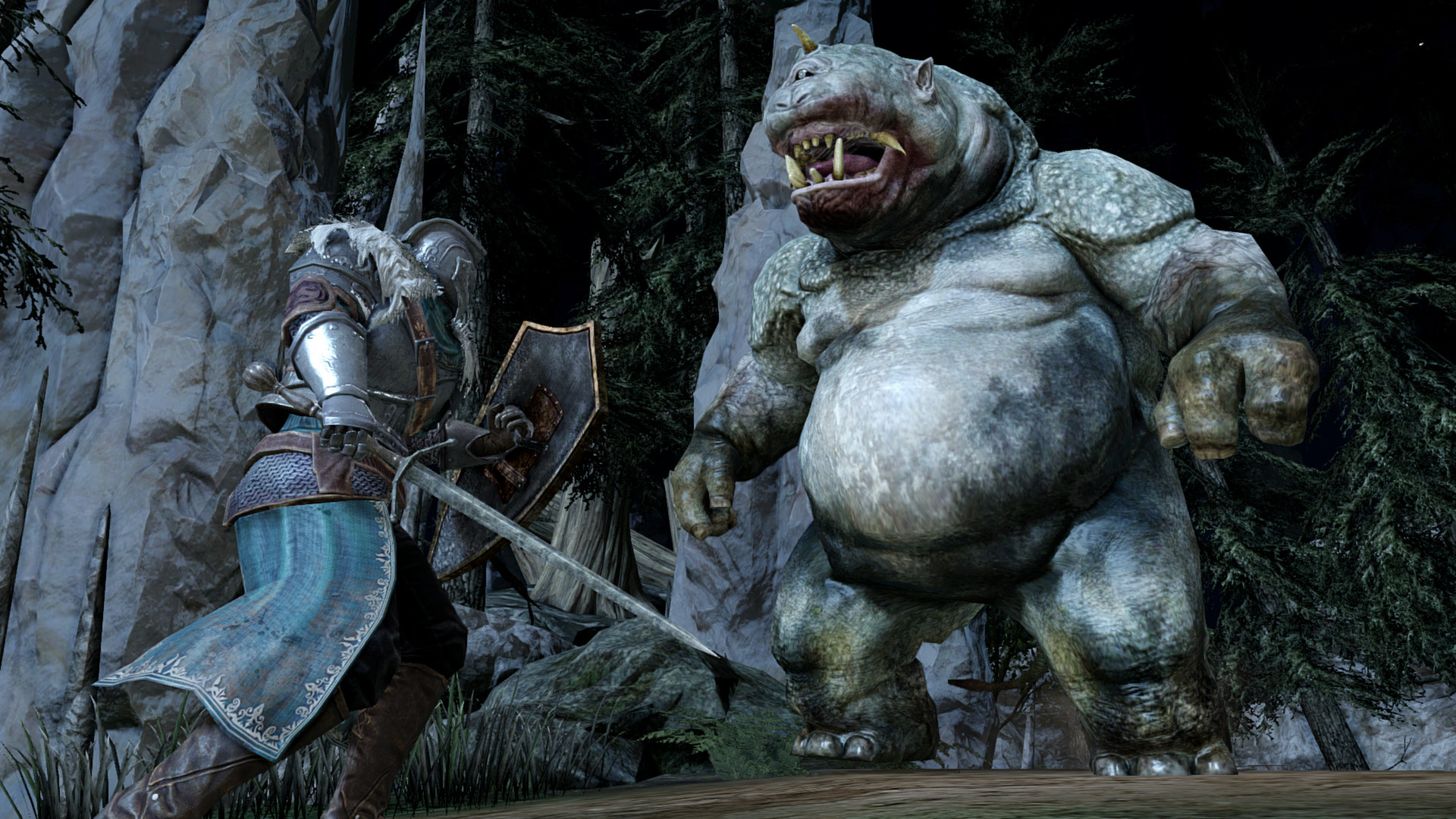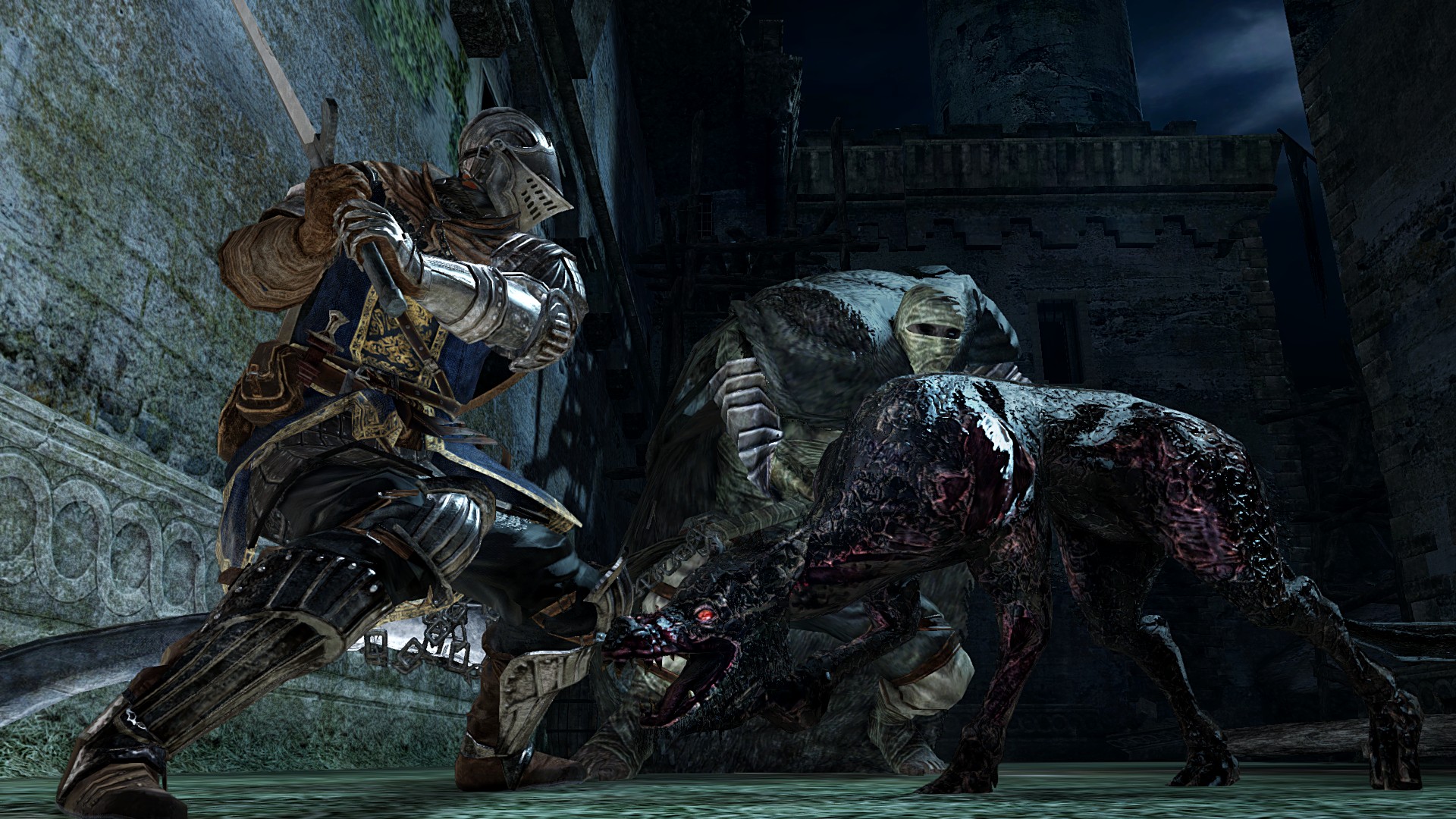
It would be hard to overstate Dark Souls' influence at this point, spawning not only its own subgenre but altering the sensibilities of a broad array of games outside of the soulslike mould. If you ask me, the results have been mixed—partly, I think, because it's difficult to define the game's formula and the source of its success. Then there are the sequels, which have caused endless debates about which is the greatest of the Dark Souls trilogy. One thing usually gets agreed upon though: it isn't Dark Souls 2.
The original game is lauded for a lot of different things, but one element that elevates it above its peers is its much talked about world design. From the Undead Burg to Sen's Fortress and the depths of The Tomb of Giants, Dark Souls has a landscape that folds back on itself, connecting each space in surprising ways that nonetheless enrich the understanding of its story. The vertical nature of it, one area stacked upon another, remains uniquely captivating. It's the only game I know of whose world can be so evocatively encapsulated by a single, striking map. It truly makes you feel like there's hundreds of feet of rock above you when you're trapped deep below the earth.

Dark Souls 2 doesn't have this. Its world is divided into dead end paths, each its own corner cut off from the rest. A now infamous elevator from the top of a tower in the middle of a valley inexplicably takes you into the heart of a volcano. Fast travel is introduced from the start, too, removing that sense of isolation and making it so that no journey ever feels like one of the original's monumental undertakings. Home is only ever a loading screen away. Much has been said of Dark Souls 2's troubled production, and that it shows the scars of that is no surprise, but what is surprising is just how many ideas it still manages to pull off. There are places like a misty forest full of invisible foes, a set of islands above the clouds inhabited by dragons and time travelling trips to the past through fallen giant's memories. Regardless, for many people who'd been so enamoured with the first game, this was a big step down.
While the small-scale level design of individual areas, with shortcuts and hidden routes that send you in a loop, can be found in plenty of its imitators, Dark Souls' impeccable approach to world design is singular. Even FromSoft's own sequels and spiritual successors, whether that's Bloodborne or Sekiro: Shadows Die Twice, don't have such a coherent world. It's not hard to imagine why, because even Dark Souls itself struggles to pull it all together. Late game area Lost Izalith, for instance, is full of recycled enemies and a barely functional boss fight involving some truly terrible platforming the game wasn't built for, and shows the cracks in the games ambitious design.
Yet, in a twist of fate, while the original game's magic has never been replicated, the maligned Dark Souls 2 is the one whose ideas are now starting to dominate the evolution of soulslikes.
The real Dark Souls starts here

While its world design never reaches the heights of the original, the sequel invests much more into player choice. There are numerous systems buried within the game that allow players to modify the experience to suit their whims. Combat is more nuanced and customisable, introducing power stances that create new movesets when you wield two similar weapons in each hand. There are more ways to approach a fight than there are in the original, and arguably even Dark Souls 3.
While its world design never reaches the heights of the original, the sequel invests much more into player choice.
If that system sounds familiar, it's because Elden Ring does the same thing. FromSoft's latest actually shares many of Dark Souls 2's sensibilities, putting players in the driving seat of their experience instead of throwing them down an obstacle course full of skeletons with the lights off. Even ingrained series and genre expectations, like the ability to respec the player character stats later in the game, only started with 2. Elden Ring is no less lacking in the intricate world design of the first Dark Souls, too big to weave its spaces around each other, but people love it—Souls fans and newcomers alike. And Elden Ring's immense popularity is owed in part to the philosophy of Dark Souls 2.
The biggest gaming news, reviews and hardware deals
Keep up to date with the most important stories and the best deals, as picked by the PC Gamer team.
Dark Souls 3 also follows 2's footsteps, favouring a similar world structure with divergent, dead-end paths with fast travel available from the start. Even the central hub, its Firelink Shrine, is completely cut off from the rest of the game world. In fact, it leans harder into the idea of a mish-mash world with its geography making very little literal sense. If people hated it about 2, they'd come around to it by the time 3 was released, with plenty of praise heaped upon the threequel, which was nowhere near as maligned by fans.

Even outside of FromSoft's library, Dark Souls 2's sensibilities have not only taken root but are growing fruit. The upcoming Wo Long: Fallen Dynasty introduces a system similar to the Bonfire Ascetics that allow you to bump an area to its New Game Plus variant, in turn obtaining more powerful gear if you can tackle the tougher foes. Wo Long has banners which provide a mirror function: small flags that can be discovered and raised throughout an area to bring down enemy morale, reducing their stats and making the game easier. You can see an enemy's rank in relation to your own when you meet them and decide for yourself whether you want to tackle a super tough foe for greater rewards or hunt down a banner and bring them down a peg first.
Dark Souls 2's greatest contribution might simply be in making the infamously (perhaps overstated) gruelling nature of the original more accessible with considerations like fast travel, ways to undo mistakes, and systems like Soul Memory to prevent players being invaded by veterans who have fought their way to end game weapons to harass low level beginners. Almost every soulslike since has incorporated many of these quality of life touches. The Surge, Code Vein, Mortal Shell, Ashen, Nioh…take your pick. The very things people claimed to hate about the sequel are now the backbone of the genre. I think we've reached a point where I'd be shocked to find one of these games without fast travel of some kind or the ability to reroll on my stats.
The path less travelled

In searching for ways to build upon FromSoft's success, after failing to outright copy it, it feels like numerous developers have found themselves in the same position as the team behind Dark Souls 2. Instead of trying to repeat the tricks of Dark Souls, it's a lateral move, building on the things that were less developed in the original. It opens with a shadow mirror image of a grand city we never visit. Its true ending, unlocked by completing all its DLC, concludes with the player walking away from the throne to find their own path. How appropriate. People wanted more of the same, which it doesn't deliver, but time has proven that approach to be the right one.
It would be easy now for developers to chase after Elden Ring's success. To mimic its mechanics and themes. Inevitably, it would be a folly to do that. A subgenre as specific as the soulslike won't survive through mere imitation. We already have Elden Ring. Instead, perhaps they should be asking: What would Dark Souls 2 do?

